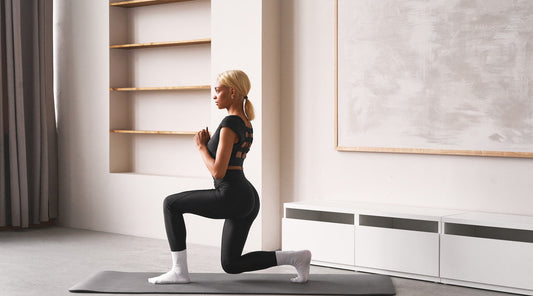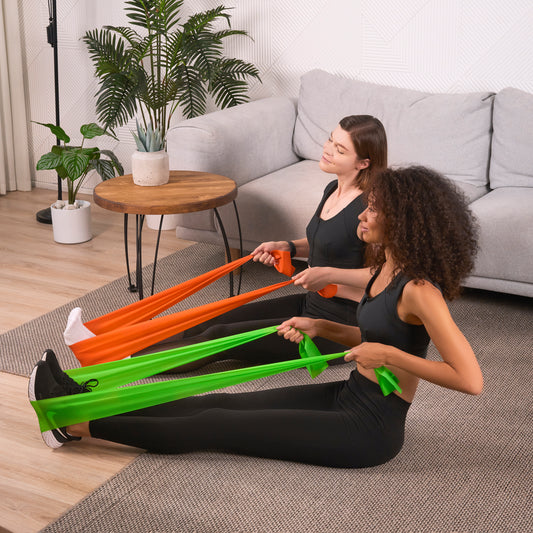Have your elders ever advised you to straighten your posture and become less stooped? The advice may irritate you, but it turns out that it has a lot of merit. Keeping your alignment and posture correct is crucial for your bone health.
Without good posture and alignment, you may be placing undue strain on your bones, which increases your risk of fractures, osteoporosis, and other bone-related disorders. Your bones give your body support and structure. Let’s find out the connection between posture and osteoporosis.
Maintaining a balanced and upright posture reduces the risk of falls and bone deterioration by bringing the spine and other key joints into alignment.
Conversely, having a bad posture might make you more prone to injury, create pain, and affect your ability to balance. The role of posture in preventing osteoporosis is crucial.
Good posture and body mechanics can limit the amount of stress on your spine and lower your risk of injury and fracture if you have osteoporosis. Studies have shown that osteoporotic fractures are a major global cause of morbidity and mortality.
Knowing how to prevent osteoporosis through posture correction is valuable to avoid its critically bad impact on your health.
Understanding the Link Between Posture and Bone Health
How Poor Posture Affects Bone Density
Maintaining proper posture relieves stress on your knees, hips, back, and all the muscles and tissues that link them, assisting to avoid brittle bones in the future. This lessens aberrant wear, which may cause damage or irritated joints over decades.
An ideal weight distribution from your cranium to your toes ensures that no part of your body experiences undue strain. This is made possible by proper upright alignment. As a result, there is a lower chance of future osteoporosis posture and a healthier growth of bone density.
Connection Between Stooped Posture and Osteoporosis
Osteoporosis patients may suffer from vertebral compression fractures, sometimes known as wedge fractures or just "compressions." These spine fractures may result in a forward-leaning or stooped posture. Poor balance can cause falls. The most frequent reason for what is known as a macro-trauma or fracture of the spine, wrist(s), or hips is falls.
Benefits of Good Posture for Preventing Osteoporosis
The following are some advantages of proper posture to prevent osteoporosis:
- Maintains good bone alignment. Prevents excessive bone and joint wear and tear.
- Decreases tension on the spine. Assists in avoiding damage and stress fractures.
- Delays loss of bone density. Promotes long-term bone health.
- Strengthens muscles. Bone density is maintained, and strong muscles support bones.
- Improves body mechanics. Promotes healthy mobility and lowers the risk of problems related to the bones.
- Reduces fracture risk. Good posture reduces bone stress and impact.
Postural Exercises to Prevent Osteoporosis
Posture exercises for osteoporosis can benefit the spine by slowing or reducing bone loss. Additionally, they can increase muscle strength and balance, which lowers the chance of accidents and falls.
Safe Posture Correction Techniques for Bone Health
- Keep your shoulders back, chest open, and ears in line with your shoulders to maintain good alignment.
- Use exercises like planks and bridges to strengthen your core muscles and support your spine.
- To increase flexibility, do frequent stretches that target the hips, shoulders, and back.
- Watch your posture and try not to slouch, especially when sitting.
- Ergonomically arrange your workstation to encourage proper posture.
- Exercises that require weight bearing, such as walking or low-impact workouts, might help increase bone density.
Daily Exercises to Strengthen Your Spine and Bones
Include postural exercises focusing on bone health and core stability daily to strengthen your spine and bones.
- Bridges work the lower back and glutes to encourage optimal alignment, while planks strengthen the core and assist spinal stability.
- Bird dogs help support the spine by enhancing balance and core strength. Wall sits improve stability by using the leg and core muscles.
- Weight-bearing exercises that increase bone density and general bone health include brisk walking and mild jogging.
Yoga and Pilates for Posture and Bone Density
Strengthening muscles, increasing flexibility, and promoting spinal alignment, yoga and pilates help in posture correction and osteoporosis prevention. While pilates emphasizes core stability and regulated movements to support the spine and reinforce posture, yoga's weight-bearing poses, such as warrior and mountain positions, aid in the developing bone health. Both can be regularly practiced to maintain general skeletal health and stop bone loss.
Posture Correction Tools for Osteoporosis Prevention
Using a Posture Brace to Improve Spine Alignment
A posture brace can help you achieve better spine alignment by supporting and reminding you to maintain proper posture throughout the day. It also eases the tension on your muscles and joints by maintaining a neutral posture for your spine and shoulders.
Even though a posture brace can be useful for improving posture, it should be used with back and bone strengthening exercises to guarantee long-term benefits and avoid dependence on the brace. An additional item in your wardrobe that is aimed to help is a posture corrector from Etalon.

Back Support Options for Osteoporosis Management
- Belts and braces preserve correct alignment and give the spine external support, which lessens pain and helps prevent more fractures.
- Posture correctors. Lightweight supports that promote improved posture can ease spinal strain and lower the chance of bone loss.
Preventing osteoporosis with good posture is not challenging if combined with weight-bearing activities and a diet high in calcium and vitamin D.
How to Maintain Proper Posture for Long-Term Bone Health
Tips for Sitting, Standing, and Sleeping Correctly
- Sitting properly means keeping your shoulders relaxed, back straight, and spine neutral.
- Steer clear of slouching or slumping forward, and maintain a 90-degree angle at the knees and flat feet on the floor.
- When standing, balance your weight on both feet, bend your knees slightly, and don't lock them.
- Ensure your head is aligned with your spine, and your shoulders, back, and chest are open.
- Select a mattress that accommodates the natural curvature of your spine, and use pillows that maintain the alignment of your head and neck.
- Another way to keep alignment and lessen strain is to sleep on your side or back with a pillow between your knees.
Common Mistakes to Avoid in Everyday Posture
Slouching or hunching over are common habits to avoid in daily posture since they place excessive strain on the muscles and spine. Leaning forward or rounding your back when sitting can cause discomfort and poor spinal alignment. Locking the knees or arching the lower back when standing can also strain muscles and joints.
Using electronics while craning your neck or holding your head forward strains your shoulders and upper back. Lastly, prolonged periods of immobility might cause stiffness and decreased circulation.
Why Choose Etalon Products for Posture and Bone Health?
Using an Etalon posture correction bra is a great way to maintain bone health and provide back support for osteoporosis.
This high-end bra is made especially to offer mild support that helps to straighten the spine, lessen slouching, and encourage appropriate shoulder placement. Its ergonomic design provides pleasant compression that promotes proper daily posture without limiting mobility.
The Etalon posture correcting bra supports bone health by easing back pain and lessening the strain on muscles and bones. High-quality materials and an emphasis on comfort and efficacy make Etalon bras a dependable option for preserving posture and fostering long-term spine health.
Premium Posture Braces Designed for Osteoporosis Support
High-end posture braces help people with osteoporosis by encouraging healthy spinal alignment and lessening muscle and bone strain. Constructed from premium, long-lasting materials, these braces support the shoulders and back with mild compression, reducing pain and halting further bone deterioration.
They are adjustable and ergonomically built to provide comfort and stability while permitting natural movement, which helps to enhance posture and bone health in general.
Back Support Solutions Backed by Research
Research indicates that superior braces and ergonomic supports can reduce pressure, encourage healthy posture, and lower the chance of injury. These remedies ease pain, promote mobility, lessen strained muscles, and support the spine.
In addition to improving overall well-being, evidence-based back support can improve posture and stop additional spinal degeneration.
Conclusion: Protect Your Bones with Proper Posture
Proper posture is crucial to preserving bone health and avoiding injuries. It eases the load on bones and muscles, improves circulation, and supports healthy spinal alignment.
Employing posture supports, adopting healthy sitting, standing, and sleeping practices, and including back and core strengthening activities can protect your bones and enhance your general health. Good posture can lower the chance of bone injury and promote long-term bone health.
FAQs
How does proper posture prevent osteoporosis?
What are the best posture exercises for osteoporosis prevention?
Can a posture brace help with osteoporosis?
How is posture connected to osteoporosis risk?
What is the role of back support for osteoporosis prevention?
Trending
Try Etalon posture improvement products









